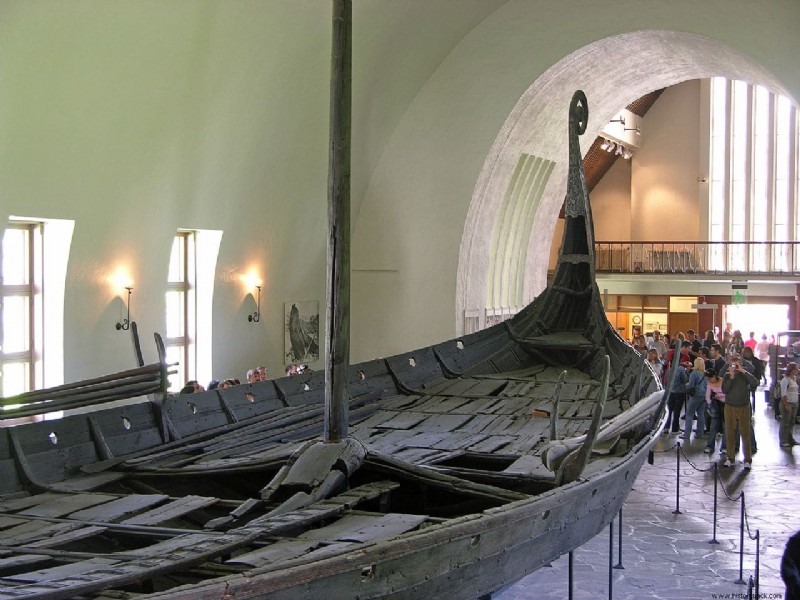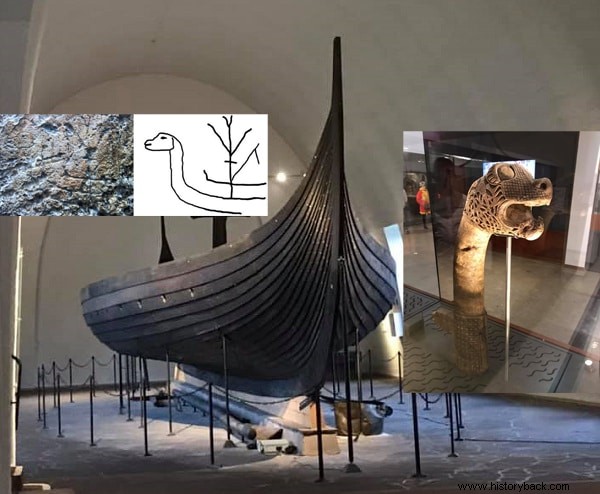The Oseberg ships , Gokstad and Tune they are the three unique drakkar found in good condition in Norway and this is due to the fact that they were used as tombs , and inside them numerous jewels and gold objects were found.
The drakkar is the typical boat used by the Vikings for military purposes and to make exploratory trips to Iceland and Greenland.
The development of the typical profile of these ships was the result of an evolution that lasted centuries, which reached the most commonly known shape around the 9th century .

In Norway these ships were used until the 15th century.
They were buried in mounds about 6 meters deep, made with blue clay and stones. In this way the tombs were hermetically sealed.
Nevertheless in different historical periods some grave robbers stole part of the treasures hidden in these mounds.

The Tune ship it was the first to be discovered and extracted ( 1867 ). The reconstructed ship is about 22 meters long, but of the three it is the least well preserved, as it is missing one of the two ends.
The ship of Gokstad it was later discovered in 1880 . The tomb that contained it was that of a 60-year-old man, whose remains were found. Along with it were found other important finds such as three small boats, a sled, a gangway and 64 shields. The ship is about 24 meters in size and has 16 rows of planking on each side, making it the largest of the three on display in the museum.

The Oseberg ship it was the last to be discovered, about 25 years later, in 1904 . In that year, the tomb was opened by archaeologists, where the bodies of two women were found together with the ship along with numerous artifacts of the time. The extracted ship was perfectly reconstructed, with almost 90% of the original wood. The attention to detail, the particular predilection for embellishing the boat is evident in the zoomorphic carved decorations, typical of the Nordic symbolism used at the time and chiseled in the stern and bow, very complicated in design. Their purpose was both to scare enemies by making the boat take on the shape of a sea serpent, and to protect against mythological monsters.

The ship was built in oak wood, is 21 meters long, 5 meters wide and is thought to have mounted a mast 9 or 10 meters high where swollen, a square sail stood out. In addition to the wind, he could use a double row of 15 oars as propulsion.
It was hazarded the hypothesis that the two women, one around 60, the other around 30, could be the queen Åsa of the Yngling dynasty, wife of Gudrød the Hunter, mother of Halfdan the Black and grandmother of Harald, the first king of Norway, or that the two bodies were priestesses.

The equipment found is remarkable, although the tomb was certainly sacked in ancient times, plundered of precious metals, together with the ship were found the remains of 14 horses, an ox, 3 dogs, 4 sledges and the only chariot 4 Viking wheels, finely inlaid, come down to us.

